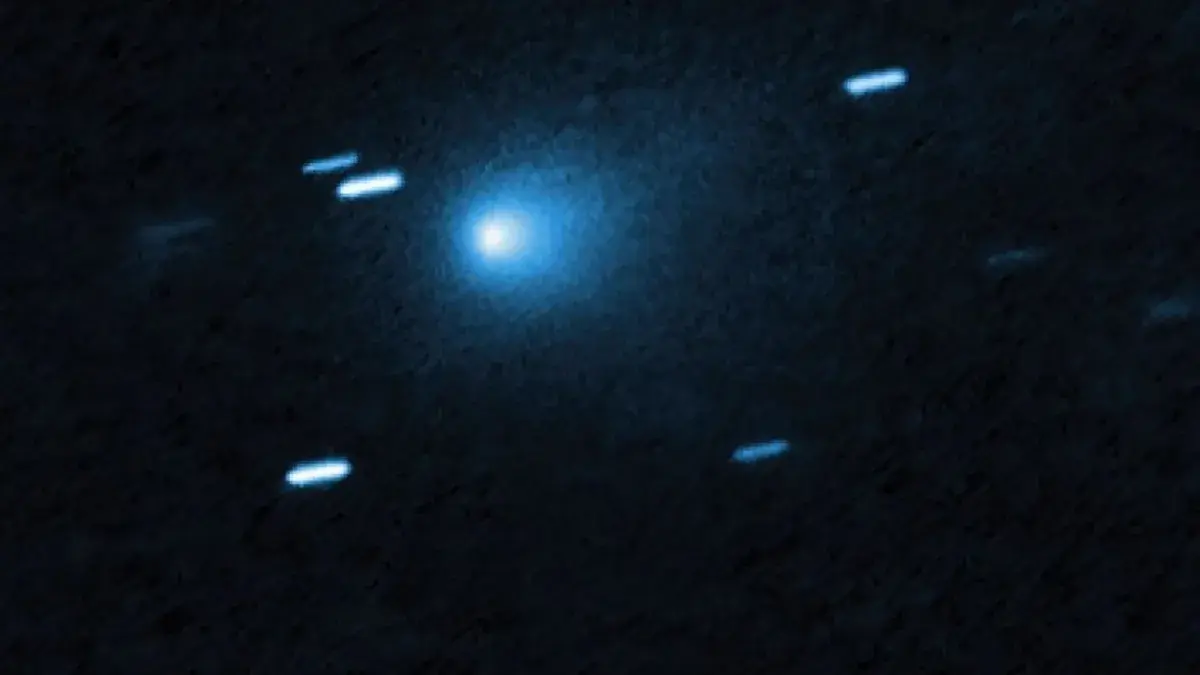Copyright Newsweek

An interstellar object known as 3I/ATLAS has gathered a significant amount of attention in the planetary science sphere, and soon it will reach its closest point to the sun. 3I/ATLAS is the third-ever comet from another solar system that has been discovered, sparking significant excitement among scientists in the field. This is a "hugely exciting discovery," Darryl Seligman, a professor in the physics and astronomy department at Michigan State University, told Newsweek. Newsweek reached out to NASA via email for comment, but received this automated email from NASA: "NASA is currently closed due to a lapse in government funding. This mailbox is not being monitored." Why It Matters Interstellar comets are rare finds, making the discovery of 3I/ATLAS particularly interesting to planetary scientists. "This is only the third such interstellar comet we've ever been able to study, and planetary scientists are super excited to learn about what comets in other solar systems are like," Jason Wright, a professor of astronomy and astrophysics and director of the Penn State Extraterrestrial Intelligence Center at Pennsylvania State University, told Newsweek. "Comets form early in a star's life, along with the planets that orbit them," Wright said. "Most stay around their star and occasionally get close and grow a tail, but a few can be thrown out of their system by gravity of the planets and end up floating in interstellar space." What Is 3I/ATLAS? The comet was first discovered on July 1 by the NASA-funded ATLAS (Asteroid Terrestrial-impact Last Alert System) survey telescope in Rio Hurtado, Chile, and given its official name, 3I/ATLAS. At the time, it was located about 670 million kilometers from Earth. NASA determined it "poses no threat to Earth," and that it will remain at a distance of at least 240 million kilometers from the planet. Before 3I/ATLAS, there were two other interstellar objects discovered. These were 1I/`Oumuamua and 2I/Borisov, discovered in 2017 and 2019, respectively. "We know these objects are from elsewhere in the galaxy because they have hyperbolic orbits, unbound from the solar system – they arrive, then they leave and they never return," Seligman said. In the scientific community, 3I/ATLAS is widely accepted as a comet. Seligman said there is "clear-cut evidence of cometary activity–it was and still is behaving entirely in line with solar system comets at large distances." However, one scientist, Abraham "Avi" Loeb, a professor of science and director of the Institute for Theory and Computation at Harvard University thinks there could be a small chance it is "alien technology." Loeb's reasoning for this is that he says the comet has displayed eight "abnormalities." These "abnormalities" include: 3I/ATLAS is significantly larger than both previous interstellar comets found, while moving faster; the fact that it will be "unobservable from Earth" at the point where it is closest to the Sun; "the gas plume around 3I/ATLAS contains much more nickel than iron;" as well as a number of others. However, other scientists maintain that 3I/ATLAS is a comet. While it has "a few peculiarities," Wright said, "this isn't a big surprise." He said this was because, firstly, comets in the solar system "have a lot of variation," and secondly, because they are from "another star system, so should have some differences." "Those differences can help tell us about how other star systems form their planets," he said. He also said that many comets contain some nickel, as well as most of the elements on the periodic table. Seligman said that for some comets that get close to the sun, it is possible to see "nickel vapor because there is nickel in the dust grains coming off of it, and that vaporizes." This usually happens at "much higher temperatures than 3I/ATLAS was at," he said, but added that this was something "we have seen in solar system comets and also in the last interstellar comet 2I/Borisov." "This behavior of nickel being seen at far distances where it is too cold for direct nickel sublimation has been seen in solar system comets," he said. "It probably means that the ice structure is complex in 3I/ATLAS, and that nickel was in the ice along with a lot of other species." Why Is October 29 Significant? On October 29, the comet will reach its closest point to the sun. This point, known as perihelion, usually results in conditions that provide the ideal circumstances for scientists to gain a better understanding and glimpse of the comet's composition. "Every comet by definition has a close approach to the sun," Seligman said. That point is when the comet has the "most direct sunlight, so it is at its warmest," he added. This causes different ices to start "activating at different temperatures," meaning "you get the most ices possible," he said. "Observations of a comet near perihelion are kind of like getting the most bang for your buck—you have the best shot of getting the most holistic view of the comet’s composition because the most possible ices should be active," Seligman added. Although Loeb has been voicing his suspicions about the comet's orbit. He said the opportune time for viewing 3I/ATLAS is "during the same period when it is hidden from view to Earth-based telescopes." He posed the question: "Was this a mere coincidence or a result of orbital design and basic astronautics?" He also recently said on Mayim Bialik's podcast Bialik Breakdown that: "If you want to take a vacation, take it before that date [October 29]. Because who knows what will happen." However, Wright argued that there "is no significance" to this route of orbit, and that it will be possible to "catch it again on the way out." According to NASA, 3I/ATLAS will reappear on the other side of the sun by early December.



